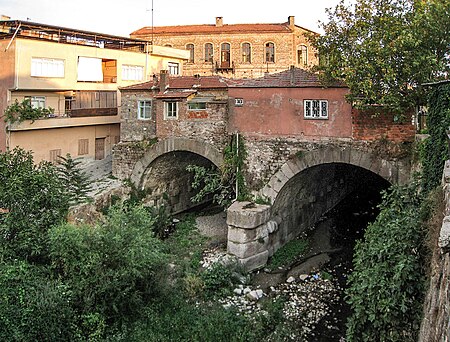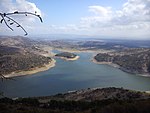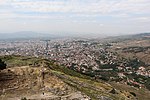Pergamon Bridge
Arch bridges in TurkeyBergamaBuildings and structures in İzmir ProvinceDeck arch bridgesPergamon ... and 3 more
Roman bridges in TurkeyStone bridges in TurkeyTunnels in Turkey

The Pergamon Bridge is a Roman substruction bridge over the Selinus river (modern Bergama Çayı) in the ancient city of Pergamon (today Bergama), modern-day Turkey. The 196 m (643 ft) wide structure, the largest of its kind in antiquity, was designed during Hadrian's reign (AD 117–138) in order to form a passageway underneath a large court in front of the monumental "Red Basilica" temple complex. The two intact tubes, which consist of supporting walls covered with barrel vaults, still serve their purpose to this day.
Excerpt from the Wikipedia article Pergamon Bridge (License: CC BY-SA 3.0, Authors, Images).Pergamon Bridge
Kınık Caddesi,
Geographical coordinates (GPS) Address Nearby Places Show on map
Geographical coordinates (GPS)
| Latitude | Longitude |
|---|---|
| N 39.121583 ° | E 27.182667 ° |
Address
Kızıl Avlu (Serapeion) (Kızıl Avlu)
Kınık Caddesi
35700 , İslamsaray Mahallesi
Turkey
Open on Google Maps








